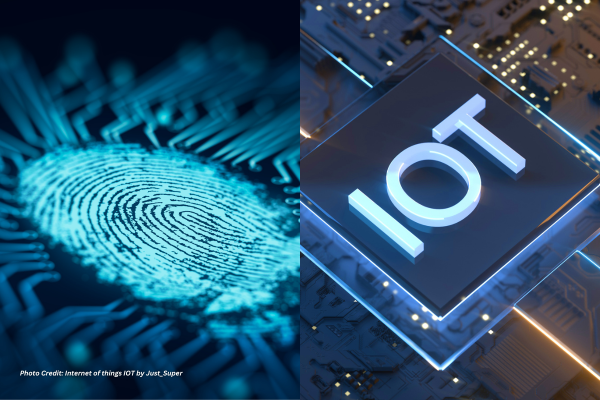It is believed that we are now in the Fourth Industrial Revolution. The first three being the steam age, the age of science and mass production, and the rise of digital technology. The fourth industrial revolution, also known as Industry 4.0, the age of disruptive technologies being mobile, social media, cloud, Internet of things (IoT), virtual reality (VR) and artificial intelligence (AI).
According to Gartner, there will be about 4.8 billion internet-connected (IoT) devices by the end of 2019 and this number is expected to reach 5.8 billion by 2020. It is stated that Utilities will be the highest user of IoT endpoints, totaling 1.17 billion endpoints in 2019, and increasing 17% in 2020 to reach 1.37 billion endpoints.
The Australian Government is supporting the deployment of IoT projects through the provision of grants.
“The Australian Government is investing $50 million through the Smart Cities and Suburbs Program to support the application of ‘smart technology’, such as IoT, at the local government level. The competitive grants program seeks to facilitate public and private sector co-investment and collaboration in smart technology projects.
Fifty-two projects were awarded grants under round one of the program. The recipients will benefit from $28.5 million of Australian Government funding and $40 million of funding from partners; including local governments, industry, research organisations and the private sector.”
It is reported that Darwin has just completed Australia’s largest smart city project called ‘Switching on Darwin’. The project aims to make Darwin a world-leading smart city by having CCTV cameras, city-wide hotspots to extend free WiFi, environmental sensors and smart parking sensors all connected – enabling “better decision making” by Darwin Council.
As cities worldwide deploy their ‘Smarter City’ projects and local power, water and gas utility organisations deploy ‘Smart Grids’ and services such as smart meters for automated meter reading (AMR) and real-time data, the more connected everything becomes, exponentially increasing the risk to cybersecurity attack vectors.
An attack vector is a path or means by which a hacker (or cracker) can gain access to a computer or network server to deliver a payload or malicious outcome. Attack vectors enable hackers to exploit system vulnerabilities.
In manufacturing, IoT devices are typically designed to do narrow tasks such as sensing temperature or recording movement. The majority run on Industrial control systems (ICS) and programmable logic controller’s (PLC), an industrial digital computer which has been adapted for the control of manufacturing processes. These devices manage the turbines at power plants, robots providing advanced automation tasks at factories, through to the air conditioning and the lighting in office blocks. Many of these ICS and PLC’s interface with Windows and Linux operating systems and capable of doing much more in the background without impacting on their primary purpose.
The expectation of IoT devices is that they are to operate like our home appliances: always on providing 24×7 reliability.
This got me thinking.
Having worked for a global instrumentation and automation company I wondered how easy would it will be to find IoT devices on the internet? I decided to focus my search on Modbus which is a popular protocol for industrial control systems (ICS). It provides easy access to the control system without requiring any authentication.
Please note – all of the following information is publicly available.
Using readily available internet-based search applications and a little research on the current Modbus protocols, at the time of writing this article I was able to identify 18,778 IoT endpoints worldwide using ethernet port 502 for the Modbus TCP/IP protocol. 544 of these are located in Australia and 32 in New Zealand.
I was able to identify the make and model of the IoT device through to the operating system, the top being Windows 7 and Windows 8, Linux 2.6.x and Linux 3.x. Some of the most popular devices are the Schneider Electric TM221CE24R PLC, Modicon™ M221 Series and the Schneider Electric PLC Expansion Module Processor 1024/256 I/O Discrete, Analogue, Memory 4096 KB.
I decided to look further into the devices that I identified as being in Australia.
I was able to identify that a number of IoT devices are connected via Telstra internet. The IoT device IP address was provided and the dates that these devices became ‘connected’ to the Internet, the most recent being on 16 September 2019 at precisely 18:32:16 GMT. In some cases, the City / Town location is named, and the Project Information has been made available. One of these is named “Reservoir” and located in a New South Wales town. In some cases, additional information is available such as the name of the PC that was used to connect to the IoT device through to the file location on the PC.
Based on my findings, I can only make one assumption. IoT security is not being addressed to the same level as that of traditional corporate cybersecurity.
This article first appeared on LinkedIn.
Mark Padginton is a successful Business Development Manager in the Information Technology sector with experience and passion in cybersecurity and emerging technologies. A career in digital electronics and communications systems which started with the Air Force, was followed by Industrial Process Automation Systems in Southern Africa and New Zealand.
Mark transitioned into Information Technology with a focus on cyber threat intelligence, security, and compliance. Now with 18 years of Information Technology industry knowledge, Mark’s customers include global and regional corporate brands with a focus on mid-market, enterprise and government organisations across Southern Africa, Singapore, Australia, and New Zealand.





























































